RASKATOV/ STRAVINSKY,
Piano Concerto “Night Butterflies,”
Rite of Spring
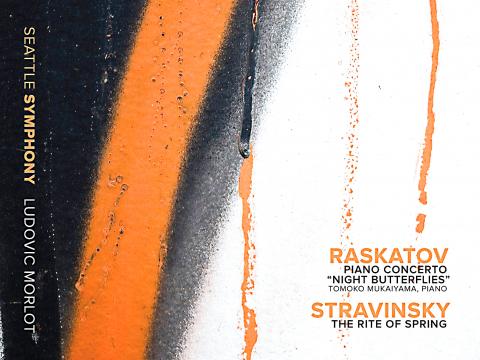
Tomoko Mukaiyama, piano,
Seattle Symphony Media SSM 1005 [CD]
FAURE
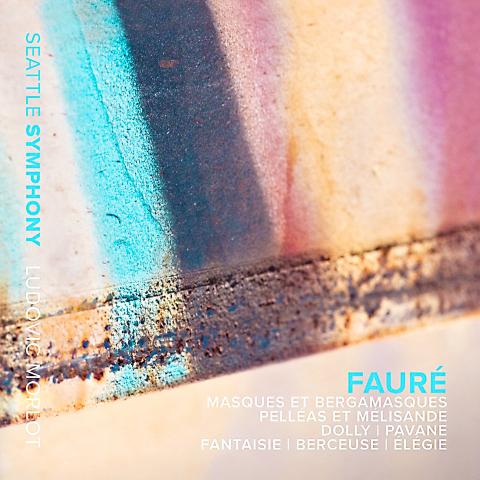
Masques et Bergamasques, etc.
Seattle Symphony
Seattle Symphony Media SSM 1004 [CD]
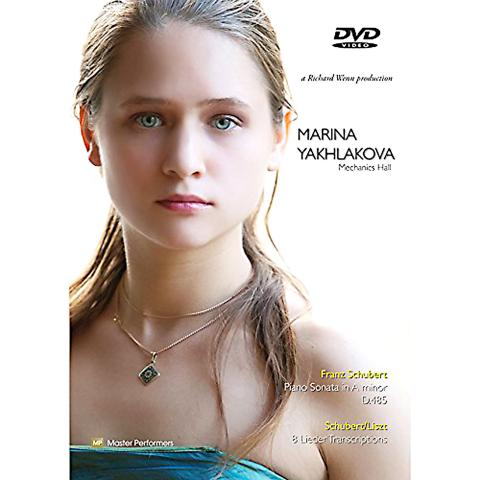
THE FIVE COUNTERTENORS
Cencic, Mynenko, Sabata, Sabadus, Yi
Decca 4788094 [CD]
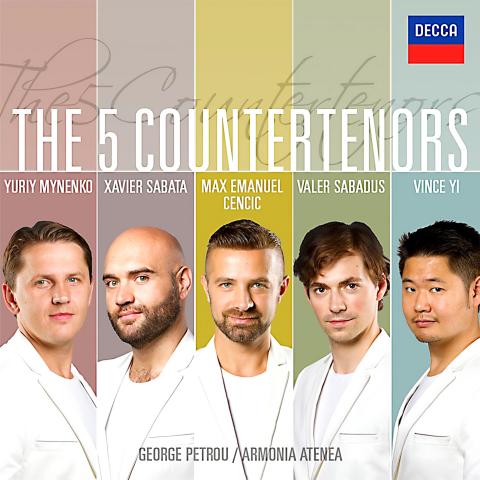
SCHUBERT AND SCHUBERT/LISZT
Marina Yakhlakova, piano
Master Performers
MPI 14 002 [DVD]
In the 18th century opera was dominated by castrated male singers who combined a high vocal range with masculine force, apparently to astonishing effect. When the practice was abandoned as inhumane at the time of the French Revolution, these old operas were either left unsung or performed using sopranos or, with transposed music, tenors or even baritones. This continued until late in the 20th century.
Fortunately, however, nature provides a number of men with naturally very high voices, and these “countertenors” increasingly came into demand with the movement for more authentic performances of 18th century music. This movement has accelerated over the last 20 years, so that today there are quite a large number of highly-trained countertenors working in the opera world. Five of them are featured on a very fine CD issued this month by Decca, The Five Countertenors.
Where they come from is almost as varied as the character of their voices. Yuriy Mynenko is from the Ukraine, Max Erasmus Cencic from Croatia, Valer Sabadus from Romania, Xavier Sabata from Spain’s Catalonia, while Vince Yi is a Korean/American. Each contributes two items to the CD.
It’s impossible to make a choice from among these brilliant voices. Cencic is highly professional, Sabate vengefully dramatic where necessary, Yi extraordinarily pure and incisive, Mynenko incredibly versatile, while Sabadus has perhaps the fullest voice of them all.
All five sing mostly items from little-known operas, though many of them were celebrated in their day. This CD is well worth buying or down-loading — my only wish is that it had been a DVD. But a sort of video sampler is available if you go to YouTube and key in “the five countertenors.” It’s the first item to come up.
Marina Yakhlakova is a young Russian pianist featured on a new DVD from the Australian label Master Performers. It was recorded in the Mechanics Hall, Worcester, Massachusetts, US last February.
Liszt’s transcriptions of some of Schubert’s songs for solo piano have been described as dramatic despite having no words and no singing voice. But when there’s no audience either you do begin to wonder. Yakhlakova sits there alone in this famous auditorium wearing a black pullover and simply plays. No pianist I’ve ever seen displays less apparent emotion, and the absence of an audience adds to the sense of isolation and solitude.
Yet these Liszt transcriptions are nothing if not bravura virtuoso pieces. They’re fashioned as vehicles for the showman, the characteristic Romantic-era pianist with his heart on his sleeve playing in front of adoring spectators. As a result, Yakhlakova’s fine performance of Schubert’s introspective Sonata in A Minor (D.845) earlier on this DVD is far more effective because more suited both to the recording situation and to this performer’s stage persona.
Faure’s self-effacing music is often thought of as for connoisseurs. But the Seattle Symphony has come up with a delightful CD of some of his less familiar orchestral works. This may not be one of the US’s most famous orchestras, but the music here is beautifully played and very well recorded.
Some of the items were created to accompany theater plays. The mellow and understated Masques et bergamasques is one, written late in Faure’s life. It’s reminiscent of Gustav Holst’s music, his St Paul’s Suite for instance. (Both men, near-contemporaries, were unsure if they could live off their compositions, Faure teaching at the Paris Conservatory and Holst at London’s St Paul’s Girls School).
There’s also a suite here made out of music written to accompany a London production of Pelleas et Melisande, not Debussy’s 1898 opera but Maurice Maeterlinck’s original play of 1892. Even more Holst-like is a short item that used to be one of Faure’s best-known pieces, the Berceuse for Violin and Orchestra, played here with the Seattle’s concert master, Russian-born Alexander Velinzon as soloist.
The Seattle Symphony is best-known for its championing of contemporary composers, and a major release is its premier recording of a piano concerto, Night Butterflies, by the Russian composer, now resident in France, Alexander Rastakov (born in 1953). This work is a wonderful and welcome break with old-fashioned modernism. Often percussive and even explosive it may be, but in an attention-grabbing performance by the Japanese-born pianist Tomoko Mukaiyama it makes for compelling listening.
Mukaiyama is also a performance artist, and in the last movement of this 12-movement concerto she has to break into wordless song. The piece was especially composed for her, and it’s doubtful if many other classical pianists will be able to follow in her footsteps.
Raskatov is best-known in Europe for his 2010 opera A Dog’s Heart, based on a long-suppressed anti-Soviet satire by Mikhail Bulgakov, eventually released in 1987. The opera was performed in France and the Netherlands, and at both London’s ENO and Milan’s Teatro alla Scala. Plans to include it in the New York Met’s 2015 season had to be canceled, apparently following differences with Bulgakov’s literary heirs.
The appearance of this CD, in other words, is a major event. It concludes with Stravinsky’s Rite of Spring, ostensibly on the grounds that 100 years separates the two works. But the real reason may be to boost the CD’s sales — a boost, it must be added, that the fine Raskatov concerto very much deserves.
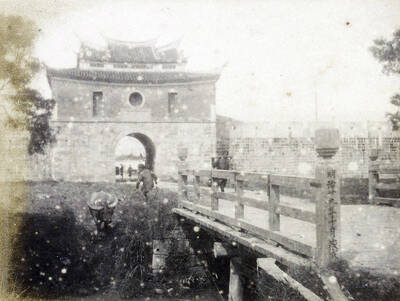
June 9 to June 15 A photo of two men riding trendy high-wheel Penny-Farthing bicycles past a Qing Dynasty gate aptly captures the essence of Taipei in 1897 — a newly colonized city on the cusp of great change. The Japanese began making significant modifications to the cityscape in 1899, tearing down Qing-era structures, widening boulevards and installing Western-style infrastructure and buildings. The photographer, Minosuke Imamura, only spent a year in Taiwan as a cartographer for the governor-general’s office, but he left behind a treasure trove of 130 images showing life at the onset of Japanese rule, spanning July 1897 to

The Taiwan People’s Party (TPP) on May 18 held a rally in Taichung to mark the anniversary of President William Lai’s (賴清德) inauguration on May 20. The title of the rally could be loosely translated to “May 18 recall fraudulent goods” (518退貨ㄌㄨㄚˋ!). Unlike in English, where the terms are the same, “recall” (退貨) in this context refers to product recalls due to damaged, defective or fraudulent merchandise, not the political recalls (罷免) currently dominating the headlines. I attended the rally to determine if the impression was correct that the TPP under party Chairman Huang Kuo-Chang (黃國昌) had little of a
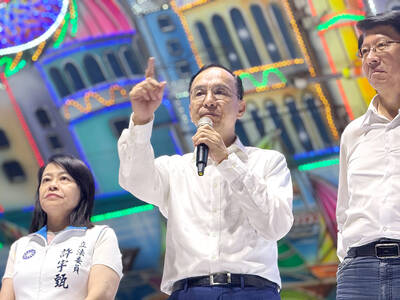
In an interview posted online by United Daily News (UDN) on May 26, current Chinese Nationalist Party (KMT) Chairman Eric Chu (朱立倫) was asked about Taichung Mayor Lu Shiow-yen (盧秀燕) replacing him as party chair. Though not yet officially running, by the customs of Taiwan politics, Lu has been signalling she is both running for party chair and to be the party’s 2028 presidential candidate. She told an international media outlet that she was considering a run. She also gave a speech in Keelung on national priorities and foreign affairs. For details, see the May 23 edition of this column,

At Computex 2025, Nvidia CEO Jensen Huang (黃仁勳) urged the government to subsidize AI. “All schools in Taiwan must integrate AI into their curricula,” he declared. A few months earlier, he said, “If I were a student today, I’d immediately start using tools like ChatGPT, Gemini Pro and Grok to learn, write and accelerate my thinking.” Huang sees the AI-bullet train leaving the station. And as one of its drivers, he’s worried about youth not getting on board — bad for their careers, and bad for his workforce. As a semiconductor supply-chain powerhouse and AI hub wannabe, Taiwan is seeing